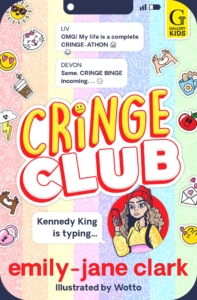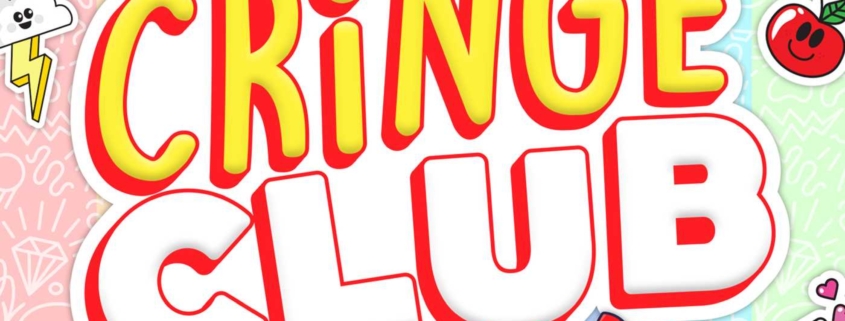Cringe Club by Emily-Jane Clark
Cringe Club is a book written as a series of text messages between three special friends as they suffer through the trials of starting secondary school! Author, Emily-Jane Clark, shares some insights into this book!

Adding reluctant readers to Cringe Club by Emily-Jane Clark
WITH reading for pleasure among children at an all-time low, publishers and authors are always looking for new ways to make books accessible to reluctant readers.
These include using eye-catching illustrations, comedy, and easy-to-read formats to entice young people to pick up a book — all three of which happen to be in my new series for ages 9+!
Cringe Club tells the story of Kennedy King, who is forced to move to London from the countryside following her parents’ divorce. Not only that, she has to start a brand-new secondary school — Hellington High, aka HELL!! The only good thing about moving is that her mum finally agreed to get her a mobile phone so she can stay in touch with her best friends, Devon and Liv.
After a disastrous first day leaves Kennedy with an embarrassing nickname, an arch-enemy, and a form tutor with a mysterious cupboard, she sets up a group chat called Cringe Club. Here, she, Devon, and Liv share their epic fails, (occasional) triumphs, and use humour to cope with the daily struggles of high school life.
As a mother of a tween, I’ve seen firsthand how reading for pleasure can drop off once children get to Years Six and Seven. They come home exhausted and overwhelmed, having spent most of the day reading textbooks, SATs exam papers or worksheets — none of which they’ve found pleasurable. The idea of concentrating on more words once they get home almost seems to lose its appeal.
I found that graphic novels helped to keep my former bookworm in the habit of reading at bedtime for a while — or reading aloud to her (when she lets me!) — but I had yet to find a traditional book that would hold her interest for longer than a few pages.
So when Simon & Schuster approached me about writing something for this age group told entirely in group chat, I jumped at the chance! Not only would it be presented in a fun and accessible format — but maybe, just maybe, my daughter would read it!
It just so happened that I already had a story in mind as I had been desperate to write a book in the older middle-grade space for a long time. Inspired by my own tweenage diaries, I had created a character called Kennedy King who was struggling to adapt to secondary school life. While her quirky sense of humour and love of magic tricks went down a storm at primary, high school kids seemed more interested in skincare routines (yawn) or Fortnite (double yawn).
The challenge would be telling Kennedy’s story entirely through dialogue. I had experience in writing scripts, so I was comfortable revealing personality and plot through speech — but without stage directions to rely on, all the “action” would have to be told by the characters in the past tense. This is where voice notes became useful — especially when a character was telling a longer story.
Another challenge was including exposition. How could I reveal a character’s backstory while maintaining the authenticity of a tween group chat? I had to forget everything I’d learned about “show, don’t tell” and “tell, not show”!
One technique I used was to think of it like a jigsaw. Small pieces of information are revealed to different people Kennedy is chatting with — so the reader can piece the story together from various threads.
This resulted in some information being withheld to be revealed later — which also served as a great way to hook people into wanting to read more!
Another way around the exposition challenge was to include other elements of phone culture. I used WhatsApp-style status updates to provide bold and fun visual information, along with Kennedy’s internet search history and the Notes app. Like a lot of young people today, instead of keeping a diary, Kennedy spills her thoughts onto her phone — this is where she writes her Mission to Make Friends, funny poems, and lists like “Why Big Sisters Are Annoying.”
What I loved most about writing this series is that it’s like getting a sneaky peek into someone else’s mobile phone — and who can resist that?
I really hope young readers enjoy reading Cringe Club as much as I enjoyed writing it — and that it inspires them to embrace their cringe, one OMG at a time.
And yes, my daughter did read it and even said it made her laugh out loud, which might be the greatest achievement of my entire career!


